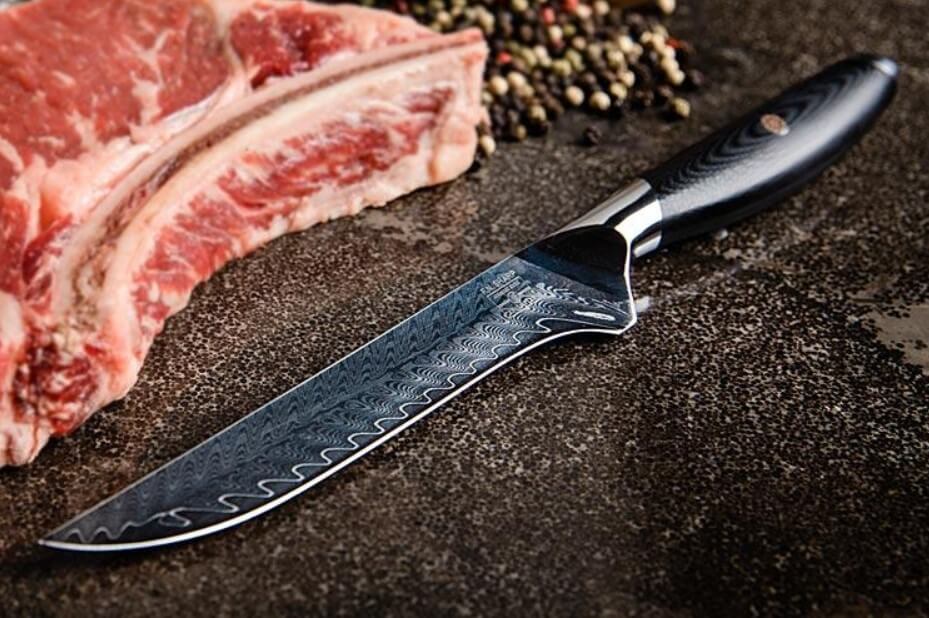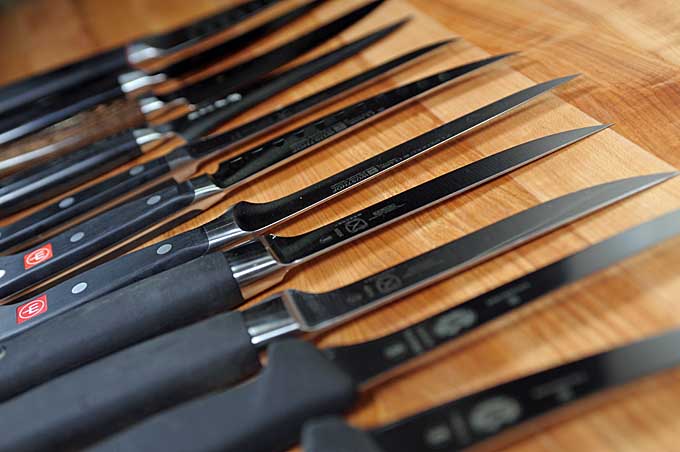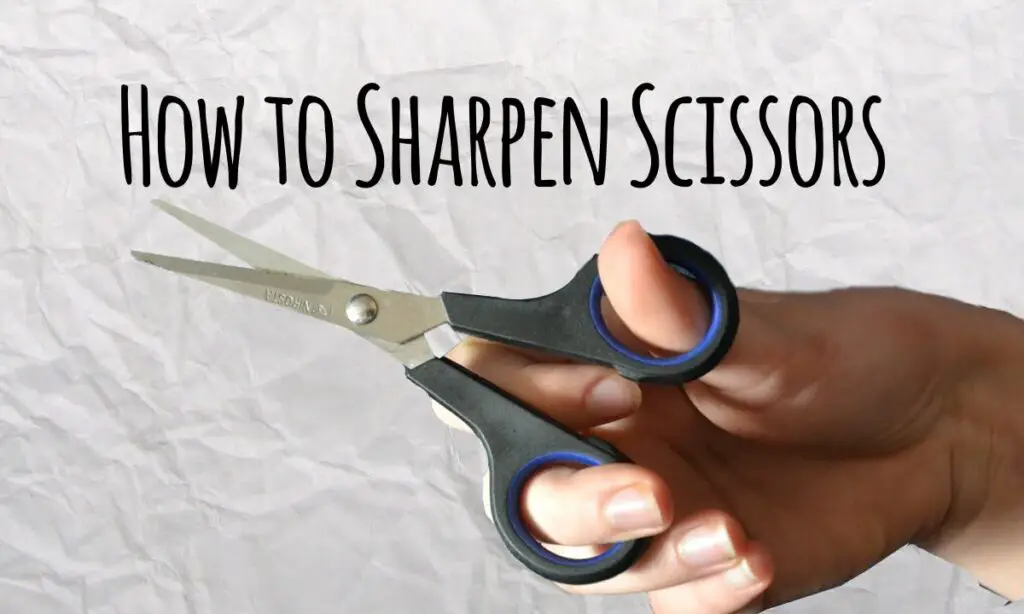A boning knife removes bones from meat, poultry, and fish. It offers precision and flexibility for delicate tasks.
A boning knife is essential in any kitchen, especially for those who regularly handle meat. Its narrow, sharp blade allows for precise cuts, making it ideal for separating meat from bones without damaging the flesh. This versatile knife caters to various types of meat, from chicken to fish.
Chefs and home cooks appreciate its utility, as it enhances efficiency and ensures clean cuts. The boning knife’s flexibility also aids in maneuvering around joints and cartilage, making it indispensable for detailed work. Investing in a quality boning knife can significantly improve your culinary experience, ensuring that every cut is perfect.
:max_bytes(150000):strip_icc()/sea-product-victorinox-fibrox-pro-6-inch-boning-knife-ashlee-redger-24-c744bb368b9e4c9b9db7efb933466f34.jpg)
Credit: www.seriouseats.com
What Is A Boning Knife?
Boning knives are essential tools in the kitchen. Their unique design makes them perfect for specific tasks. But what is a boning knife? Let’s explore its uses and why it is special.
A boning knife is a kitchen knife with a sharp, thin blade. The blade is usually 5 to 7 inches long. It has a narrow, flexible blade that makes it easy to cut around bones and joints. This design allows for precise cuts and helps reduce waste.
Why Use A Boning Knife?
Boning knives are perfect for removing bones from meat. They are also great for filleting fish. The thin blade can easily navigate bones, making separating meat from the bone easier.
Types Of Boning Knives
- Stiff Boning Knife: Best for beef and pork.
- Flexible Boning Knife: Ideal for poultry and fish.
Key Features Of A Boning Knife
| Feature | Description |
|---|---|
| Blade Flexibility | Allows for precise cuts. |
| Blade Length | Usually 5 to 7 inches. |
| Sharpness | It Helps in cutting through meat easily. |
How To Use A Boning Knife Safely
- Keep the knife sharp: A dull knife is more dangerous.
- Use a proper grip: Hold the handle firmly.
- Cut away from your body: Avoid accidents.
Using a boning knife correctly can make cooking easier. It helps in achieving cleaner cuts and makes food preparation more efficient.
The Anatomy Of A Boning Knife
Boning knives are essential tools in the kitchen, perfect for tasks that require precision. They are designed to separate meat from bones, making them indispensable for both professional chefs and home cooks. Understanding the anatomy of a boning knife can help you choose the right one for your needs and use it effectively.
The Blade
The blade of a boning knife is thin, sharp, and flexible. This design allows it to make precise cuts around bones and joints. Blades typically range from 5 to 7 inches long, and provide a balance between control and reach.
Blades can be either stiff or flexible. Stiff blades are ideal for tougher meats like beef, while flexible blades are perfect for delicate tasks like filleting fish.
The Edge
The edge of a boning knife is razor-sharp, ensuring clean cuts. A sharp edge reduces the risk of tearing the meat, preserving its texture and flavor. Regular sharpening is necessary to maintain its effectiveness.
- Straight edges are versatile and easy to sharpen.
- Curved edges provide better maneuverability around bones and joints.
The Handle
The handle is designed for comfort and grip. It should fit snugly in your hand, reducing fatigue during extended use. Handles are made from various materials, including wood, plastic, and composite materials.
A good handle provides a secure grip, especially when your hands are wet or greasy.
The Tang
The tang is the part of the blade that extends into the handle. A full tang provides better balance and durability, making the knife easier to control.
Knives with a partial tang may be lighter but are often less durable.
The Bolster
The bolster is the thick junction between the blade and the handle. It provides balance and protects your hand from slipping onto the blade. Not all boning knives have a bolster, but those that do offer extra safety and control.
| Component | Function |
|---|---|
| Blade | Thin, sharp, and flexible for precise cuts. |
| Edge | Razor-sharp for clean cuts. |
| Handle | Provides comfort and grip. |
| Tang | Extends into the handle for balance and durability. |
| Bolster | Offers extra safety and control. |
Different Types Of Boning Knives
Boning knives are essential tools in any kitchen, designed for deboning meat, poultry, and fish. Understanding the different types of boning knives can help you choose the right tool for your culinary needs. Each type has unique features that make it suitable for specific tasks. Let’s explore the two main types: flexible and stiff boning knives.
Flexible Boning Knives
Flexible boning knives have thin, bendable blades. These knives are perfect for delicate tasks, such as filleting fish or trimming fat. The flexibility allows for precise cuts, following the contours of bones and skin closely. Chefs often use flexible boning knives for intricate work where precision is crucial. They are ideal for tasks requiring detailed maneuvering.
Stiff Boning Knives
Stiff boning knives feature robust, rigid blades. These knives are best for tougher jobs, like deboning beef or pork. The sturdiness of the blade provides the power needed to cut through thick meat and joints. Stiff boning knives offer more control and are less likely to slip, making them safer for heavy-duty tasks. They are the go-to choice for tasks requiring strength and stability.
:max_bytes(150000):strip_icc()/boning-knife-review-ashlee-redger-horizontal-lead-d055af1fe46d4687b1a79bb7b388f3de.jpg)
Credit: www.seriouseats.com
Uses Of A Boning Knife
A boning knife is a specialized tool in the kitchen. It’s designed for precision and control. But what is a boning knife used for, exactly? Let’s dive into the various uses of a boning knife.
Removing Bones
A boning knife excels at removing bones from meat. Its thin, sharp blade is perfect for maneuvering around bones. This makes it easy to separate meat from the bone without wasting any. The narrow blade provides greater control, allowing for precise cuts.
Trimming Meat
Trimming meat with a boning knife is a breeze. The knife’s flexible blade allows for easy removal of fat and sinew. It ensures you get clean and has lean cuts. A boning knife can also help in shaping meat for specific dishes. This versatility makes it a valuable tool in any kitchen.
Cutting Poultry
A boning knife is ideal for cutting poultry. Its pointed tip helps in making precise incisions. You can easily remove bones and cartilage from chicken or turkey. This results in clean cuts and reduces the risk of damaging the meat. Using a boning knife ensures your poultry is prepped to perfection.
Choosing The Right Boning Knife
A boning knife is essential for any kitchen, particularly for those who love preparing meat and fish. Its primary function is to separate meat from bones, ensuring clean cuts and minimizing waste. Choosing the right boning knife is crucial for achieving precision and efficiency. Let’s explore the key factors to consider.
Blade Material
The blade material of a boning knife impacts its performance and durability. Stainless steel blades are popular because they resist rust and are easy to maintain. High-carbon steel blades are another excellent choice; they stay sharper for longer but require more care to prevent rusting. Some professional chefs prefer ceramic blades for their lightweight nature and sharpness, but they can be brittle.
Blade Length
Blade length varies and should match the task. A 5-6 inch blade is versatile and suitable for most tasks, such as trimming fat and removing bones from chicken. A 6-8-inch blade provides greater reach and efficiency for more significant cuts of meat or fish. Shorter blades offer more control, while longer blades cover more surface area, speeding up the process.
Handle Material
The handle material affects grip and comfort. Wooden handles are traditional and offer a warm, comfortable feel, but they need regular maintenance to prevent cracking. Plastic handles are durable and easy to clean, ideal for busy kitchens. Rubber or composite handles provide excellent grip, even when wet, ensuring safety and precision during use. Choose a handle that feels comfortable and secure in your hand to enhance your cutting experience.
Caring For Your Boning Knife
A boning knife is a must-have tool in any kitchen. It’s used to separate meat from bones with precision. To keep your boning knife in top condition, proper care is essential. Proper care prolongs its life and ensures it performs effectively. Below, we discuss cleaning and sharpening your boning knife.
Cleaning
Always clean your boning knife after use. Rinse it under hot water to remove any food particles. Avoid using harsh detergents; mild soap works best. Gently scrub the blade with a soft sponge. Never place your boning knife in the dishwasher. The intense heat and harsh detergents can damage the blade. Dry the knife thoroughly with a clean towel to prevent rust.
For deep cleaning, use a mixture of baking soda and water. Rub it on the blade to remove stubborn stains. Never use steel wool or abrasive materials. They can scratch the blade and reduce its sharpness.
Sharpening
A sharp boning knife is safer and more effective. Sharpen your knife regularly using a whetstone or a knife sharpener. For the whetstone, soak it in water for 10 minutes before use. Hold the knife at a 20-degree angle and slide it across the stone. Repeat this process on both sides of the blade.
Use a honing rod to maintain the blade’s edge between sharpenings. Hold the rod vertically and draw the knife down at a slight angle. This aligns the blade and keeps it sharp. If the blade becomes very dull, consider professional sharpening. This ensures the knife returns to its optimal condition.

Credit: mevell.com
Frequently Asked Questions
Do I Need A Boning Knife?
Yes, a boning knife is essential for precise meat and fish cutting. It helps in removing bones efficiently. A good boning knife improves your culinary skills and saves time.
What’s The Difference Between A Boning Knife And A Fillet Knife?
A boning knife has a stiff blade for separating meat from bones. A fillet knife has a flexible blade for filleting fish.
What Is The Difference Between A Boning Knife And A Utility Knife?
A boning knife has a thin, flexible blade ideal for deboning meat and fish. A utility knife has a versatile, medium-sized blade for general kitchen tasks.
Conclusion
A boning knife is essential for any kitchen, perfect for deboning and filleting meat or fish. Its sharp, narrow blade ensures precise cuts. Investing in a quality boning knife enhances your cooking experience and efficiency. Choose the right one to make meal preparation easier and more enjoyable.




